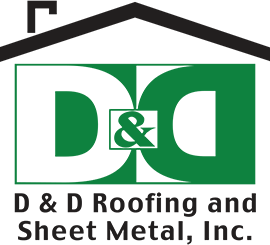Beyond making your Nevada home look gorgeous, your roof protects you and your family from the outside elements. The better the shape it’s in, the better it can do its job, which is why it’s important to take good care of it. And with proper roof maintenance, a well-built roof can last you decades. With that in mind, let’s take a look at roof components that need your attention the most.
The better shape your roof is in, the better it can do its job of protecting you from the elements.
1. Shakes and shingles
These form a magnificent armor that withstands season after season of harsh sunlight, torrential rains, erratic winds, and heavy hail. However, installation errors or damage over time can create chinks in this armor.
Curling
When a shingle is of poor quality or is not installed properly (e.g., nails weren’t hammered deep enough or fasteners weren’t used correctly), its corners can peel off and “curl” up. Not only does this look unsightly, but it also leaves bare the roof beneath, exposing it to further damage caused by water seepage.
Buckling
Unlike with curling, a buckling shingle comes loose in the middle and forms a bump, beneath which seepage may occur.
Discoloration
An unsightly splotch on your shingle or shake roof indicates a roof leak. If this leak is ignored, the splotch will only grow and cause damage down to your ceiling.
Broken or missing shingles
Without its armor, your roof has its underlying wood exposed to rain, snow, hail, and ice — all of which can induce rot.
As soon as you see any of these four symptoms, make repairs as soon as possible. If you don’t feel safe or knowledgeable enough to do this on your own, then let professional roofers do it for you.
2. Flashings
Water can flow down vertical surfaces such as the outer walls or sides of dormers, chimneys, and skylights. It can then seep into places where those surfaces meet the roof, unless it is directed away from those critical areas using flashings.
Flashings are usually made of sheet metal and can sometimes come loose on their own or deteriorate over time due to oxidation. When any of these happen, you’ll need to repair or replace your flashings. New flashings are often sold preformed and can be relatively easily installed using roof cement or caulking, though if you need flashings to be custom cut and shaped, then you’ll need to hire a professional roofing contractor.
3. Fascia
If shingles or sheet metal are what you find on top of your roof, then fascia is the vertical trim you find on the sides. Fascia is made of boards or bands of wood or metal that run the perimeter of your roof, connect the ends of trusses and rafters, and serve as the place where you install gutters.
Much like the rooftop, fascia keeps the elements from entering your home, so when you find signs of damage or rot on your roof’s fascia, have a roofer fix it immediately.
4. Gutters
These are troughs or channels that run across the edge of the eaves of your roof and catch runoff when it rains or when roof snow melts. Without gutters, runoff will fall freely to the ground near your house and cause the following:
- Soil erosion – Rainwater from the roof forms streams, which pummel the ground harder than mere droplets would. These streams carve out the soil and ruin delicate foliage.
- Siding deterioration – Streams from the eaves of your roof can make soil and organic matter splatter onto the siding of your home, making it dirty. If your siding is made of wood cladding, it can rot and require replacing.
- Pooling – When sufficient soil has been dug out by runoff, pools of water can form. These invite pests such as mosquitoes, carpenter ants, and termites.
- Foundation damage – When you let too much water fall near the foundation of your home, that water can actually seep into the foundation walls and even result in water getting into your basement.
Gutters prevent all of these from happening by redirecting roof runoff to your drainage or rainwater harvesting systems — or just 4–5 feet away from your home. Given that gutters serve important functions, it is important to address the following problems as soon as you encounter them:
Clogged downspouts
Debris such as leaves and twigs can build up, clog up the downspouts, and make the gutters retain water. And when the troughs become too heavy, they may start to pull away from the fascia or sag between the fascia hangers.
To prevent debris buildup, clean your gutters regularly. Then, inspect them for signs of pulling away or sagging. You may need to replace existing hangers and/or install additional ones if your gutters need more support.
Leaks
Plug the holes you find along the channel with sealant and seal the leaks along the joints with caulk. For larger holes, use patches.
Standing water
If your gutters aren't clogged but you find standing water in them, this means that your gutters have insufficient downward pitch toward the downspouts. Have a roofing professional fix this for you.
5. Soffits
Soffits are found on the bottom of the eaves. These compose the paneling beneath the roof overhang or the surface underneath the fascia. To help air circulate in the attic and the entire house, vented soffit panels are used. These have small holes through which cool air from outside gets pulled into the house while the hot air inside escapes via roof vents.
Vented soffit panels provide non-electric ventilation and cost-effectively prevent the accumulation of moisture, which leads to the formation of mold and mildew. However, if soffit panels have large holes and cracks, then insects, small animals, and water can enter your home more easily. Therefore, it’s best to replace damaged panels as soon as you find any.
Countless homeowners in Nevada and California trust D&D Roofing for their roof repair and maintenance needs. Let us know how we may be of service to you today.


